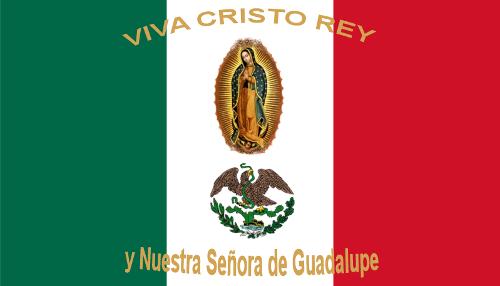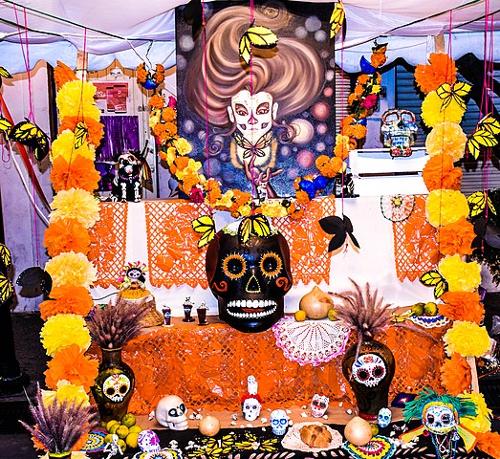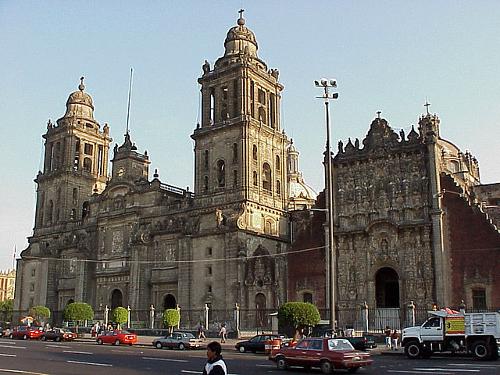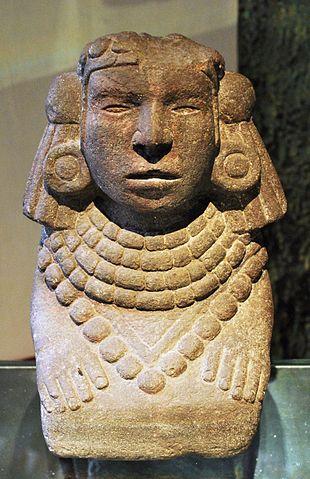MEXICO
Religion

Religion

Cities in MEXICO
| Mexico city | Playa del carmen | Riviera maya |
Religion
Many shrines and documents were destroyed by the conquistador Cortés and his men during the capture of Tenochtitlán, the ancient capital. The Roman Catholic Mission began in 1522 and completed the "work" by destroying all remnants of the original inhabitants' religion. In 1859 it was established in the constitution that church and state should be separate. This constitution was revised in 1917 and even included explicitly anti-ecclesiastical provisions, which have only been normalized since 1934.
In fact, the 1917 constitution stripped the Church of all political power. Article 130 read as follows: "The law does not recognize religious associations known as churches". The church was no longer allowed to own real estate and its own schools and newspapers were also banned. All these measures led in 1926 to the so-called "Cristero Uprising," a bloody guerrilla war waged by fanatical Catholics, which was crushed in 1929. Flags such as this one were used by the Cristeros when resisting the secular government forces in the Cristero War, MexicoPhoto: User:Immaculate CC 3.0 Unported no changes madeade
Flags such as this one were used by the Cristeros when resisting the secular government forces in the Cristero War, MexicoPhoto: User:Immaculate CC 3.0 Unported no changes madeade
The tense relations were created by the close cooperation of the Catholic Church with the Spanish rulers and the fact that the church was one of the most important landowners for a long time.
A characteristic of the relationship between religion and state is the fact that Mexico did not establish diplomatic relations with the Vatican until 1993. An altar is an important part of the Día de la muertos festival in Mexico. Usually decorated with the things the dead person liked the mostPhoto: Bala Manivasagam CC 4.0 International no changes made
An altar is an important part of the Día de la muertos festival in Mexico. Usually decorated with the things the dead person liked the mostPhoto: Bala Manivasagam CC 4.0 International no changes made
Despite all the bans, the bans were violated on all sides, often with the cooperation of the government. That could hardly be otherwise because Mexico has always been a thoroughly Catholic country. One of the restrictions that still applies is that religious have neither the right to vote nor to stand as a candidate. Catedral Metropolitana de la Ciudad de MexicoPhoto: Frankmx CC 3.0 Unported no changes made
Catedral Metropolitana de la Ciudad de MexicoPhoto: Frankmx CC 3.0 Unported no changes made
At the moment about 90% of the population is Roman Catholic. There are also some small groups including about 5% Protestants (including Mennonites), Jews and followers of other religions. A trend in recent years has been that Protestant sects and Evangelical churches are visibly gaining ground against Roman Catholicism.
Mexican Christianity is characterized by a high degree of syncretism, the amalgamation of the Roman Catholic, but also the Protestant faith, with the Indian faith. For example, the Aztec goddess Tonantzin has been replaced by the Virgin of Guadalupe, whom all Catholic Mexicans worship. Image of the god TonantzinPhoto: Thelmadatter CC 3.0 Unported no changes made
Image of the god TonantzinPhoto: Thelmadatter CC 3.0 Unported no changes made
Sources
Daling, T. / Mexico : mensen, politiek, economie, cultuur, milieu
Koninklijk Instituut voor de Tropen / Novib
Dunlop, F. / Mexico
Van Reemst,
Mexico
Cambium
Rokebrand, R. / Mexico
Gottmer/Becht
Rummel, J. / Mexico
Chelsea House Publishers
Wagenvoort, E. / Reishandboek Mexico
Elmar
CIA - World Factbook
BBC - Country Profiles
Copyright: Team The World of Info